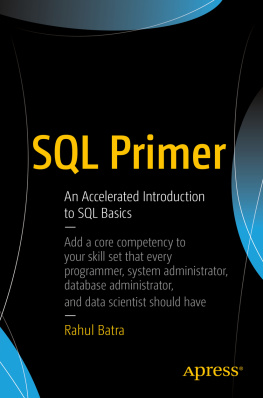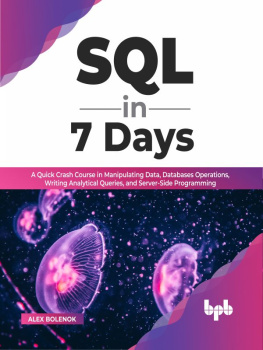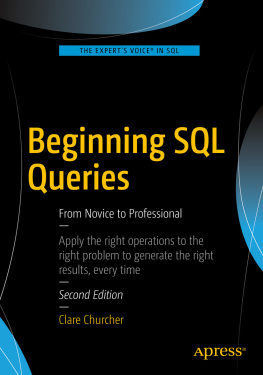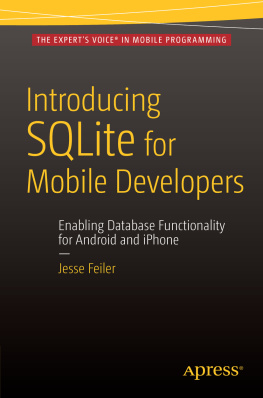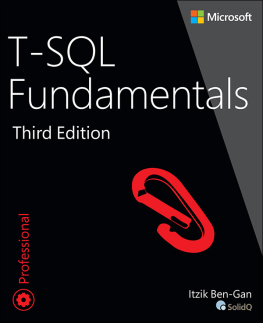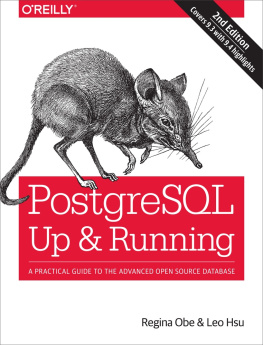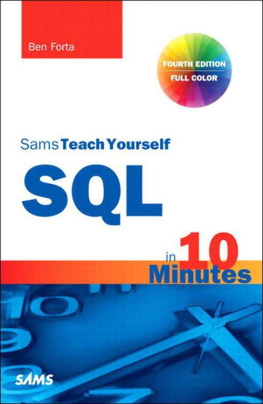Rahul Batra - SQL Primer: An Accelerated Introduction to SQL Basics
Here you can read online Rahul Batra - SQL Primer: An Accelerated Introduction to SQL Basics full text of the book (entire story) in english for free. Download pdf and epub, get meaning, cover and reviews about this ebook. year: 2018, publisher: Apress, genre: Home and family. Description of the work, (preface) as well as reviews are available. Best literature library LitArk.com created for fans of good reading and offers a wide selection of genres:
Romance novel
Science fiction
Adventure
Detective
Science
History
Home and family
Prose
Art
Politics
Computer
Non-fiction
Religion
Business
Children
Humor
Choose a favorite category and find really read worthwhile books. Enjoy immersion in the world of imagination, feel the emotions of the characters or learn something new for yourself, make an fascinating discovery.
- Book:SQL Primer: An Accelerated Introduction to SQL Basics
- Author:
- Publisher:Apress
- Genre:
- Year:2018
- Rating:5 / 5
- Favourites:Add to favourites
- Your mark:
SQL Primer: An Accelerated Introduction to SQL Basics: summary, description and annotation
We offer to read an annotation, description, summary or preface (depends on what the author of the book "SQL Primer: An Accelerated Introduction to SQL Basics" wrote himself). If you haven't found the necessary information about the book — write in the comments, we will try to find it.
Examples in the book are worked in PostgreSQL and SQLite, but the bulk of the examples are platform agnostic and will work on any database platform supporting SQL. Early in the book you learn about table design, the importance of keys as row identifiers, and essential query operations. You then move into more advanced topics such as grouping and summarizing, creating calculated fields, joining data from multiple tables when it makes business sense to do so, and more. Throughout the book, you are exposed to a set-based approach to the language and are provided a good grounding in subtle but important topics such as the effects of null value on query results. With the explosion of data science, SQL has regained its prominence as a top skill to have for technologists and decision makers worldwide. SQL Primer will guide you from the very basics of SQL through to the mainstream features you need to have a solid, working knowledge of this important, data-oriented language.
What Youll Learn
- Create and populate your own database tables
- Read SQL queries and understand what they are doing
- Execute queries that get correct results
- Bring together related rows from multiple tables
- Group and sort data in support of reporting applications
- Get a grip on nulls, normalization, and other key concepts
- Employ subqueries, unions, and other advanced features
Anyone new to SQL who is looking for step-by-step guidance toward understanding and writing SQL queries. The book is aimed at those who encounter SQL statements often in their work, and provides a sound baseline useful across all SQL database systems. Programmers, database managers, data scientists, and business analysts all can benefit from the baseline of SQL knowledge provided in this book.
Rahul Batra: author's other books
Who wrote SQL Primer: An Accelerated Introduction to SQL Basics? Find out the surname, the name of the author of the book and a list of all author's works by series.

